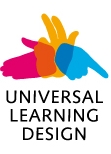There has been a debate as to whether educational games should be integrated into the school curriculum. Some educators hold stereotypical and sceptical attitudes as to what are the immediate positive changes of student’s learning cycle and competitive advantages games may offer in comparison to the traditional teaching and learning process. They overplay the negative social impact games might have on students’ behaviour (Provenzo E. F., 1992) and attitude towards learning. Some others with more conservative outlook strongly support that teaching and learning should continue to be carried out in the traditional way. So mainly when educators have discussed use of games, they have focused on the social consequences of game play, ignoring important educational potentials of gaming (Squire K., 2007). On the other hand, there are the more liberal educators who see lots of promising outcomes of integrating game technology into teaching. But there is one thing that both parties conclude on; computer-assisted instruction (CAI) and multimedia in education have significantly changed children’s learning and cognitive processes (Tsung-Yen C. et al., 2007) and can make learning a more enjoyable experience. Furthermore, research indicates that educational computer software can be motivating (Millen 2010) for children with learning difficulties and/or students with a cognitive handicap. The emergence of haptic technology and the opportunity of creating interfaces for non-visual audio-haptic interaction have opened the door to 3D interfaces by blind users (Petridou M. et al., 2011).
There are lots of parameters that an instructional technologist and a game designer should study in order to understand why games are such a popular and influential medium. For example, they should think about how game designs create emotions in players such as joy, happiness, anger and anxiety. One way in which this may be achieved is by balancing a number of game components, such as character traits, game rewards, obstacles, level of difficulty, competition with other peers and very importantly how they can achieve collaboration with other players.
Teamwork and collaboration with sighted peers and teachers is very difficult to be included in blind user interactions with graphic interfaces and in the long term may isolate students with visual handicap. Therefore, the acquisition of a shared understanding and collaboration with sighted students cannot easily be formed and the communication channel can fail to be established. It is necessary to find a way to create a channel for exchanging information between visually impaired students and their sighted peers and teachers. Visually impaired students need so share a common ground of understanding with the people around them as this will form a foundation for collaboration and interaction. Educational stakeholders should form ways of making the learning process of blind students less complicated and more enjoyable. This research deals with one way of designing and developing a playful educational game by involving users in the design process and by doing so in an arena where the cost for audio-haptics may be easily justified. Special consideration has been given to supporting collaboration between blind students and their sighted class mates. It looks into ways haptic and audio technology can help students with severe visual impairment learn and practise basic geometrical concepts by interacting with a Virtual Learning Environments (VLE).
Focusing on geometry, the main theory of space, it is very crucial for visually impaired students to develop accurate clues of spatial sense and reasoning. Geometry is a major subject in the school-curriculum and is considered to be the main theory of space. To understand the basis of its concepts, students require a good sense of spatial awareness and the ability to use optimally systematic thinking and reasoning. Among the visually impaired student population it is considered to be the most challenging and difficult subject to learn. Its contents are very rich in visual representations and pictures, adding an additional barrier to students with visual handicap to learn.
The current paper presents the research team’s efforts to identify what are the characteristics that educational games for blind students should have to be fun and effective in supporting their learning. Moreover, the team is looking into different ways of using haptics effectively to provide new computer interaction techniques for visually impaired students and how can these findings form a well-designed VLE for practising geometry using the Novint’s Falcon console. It discusses the findings and presents the way that the game was built based on the input of end-users.









